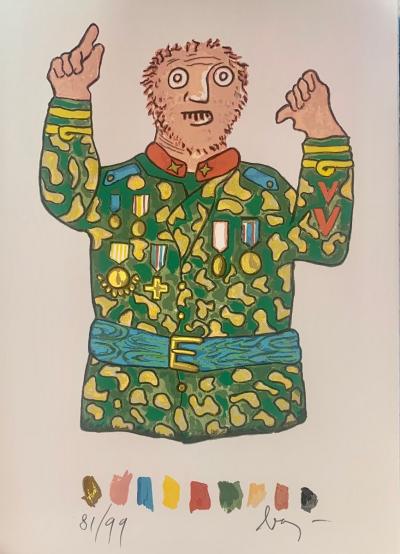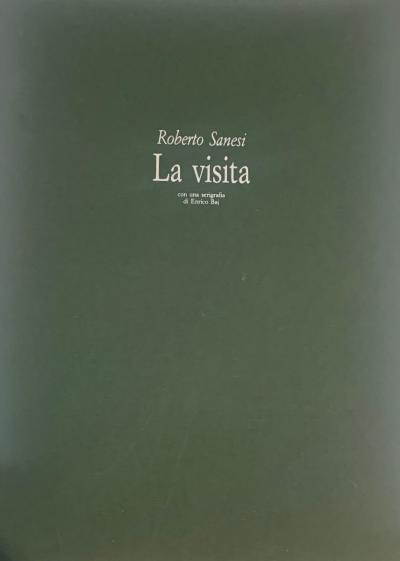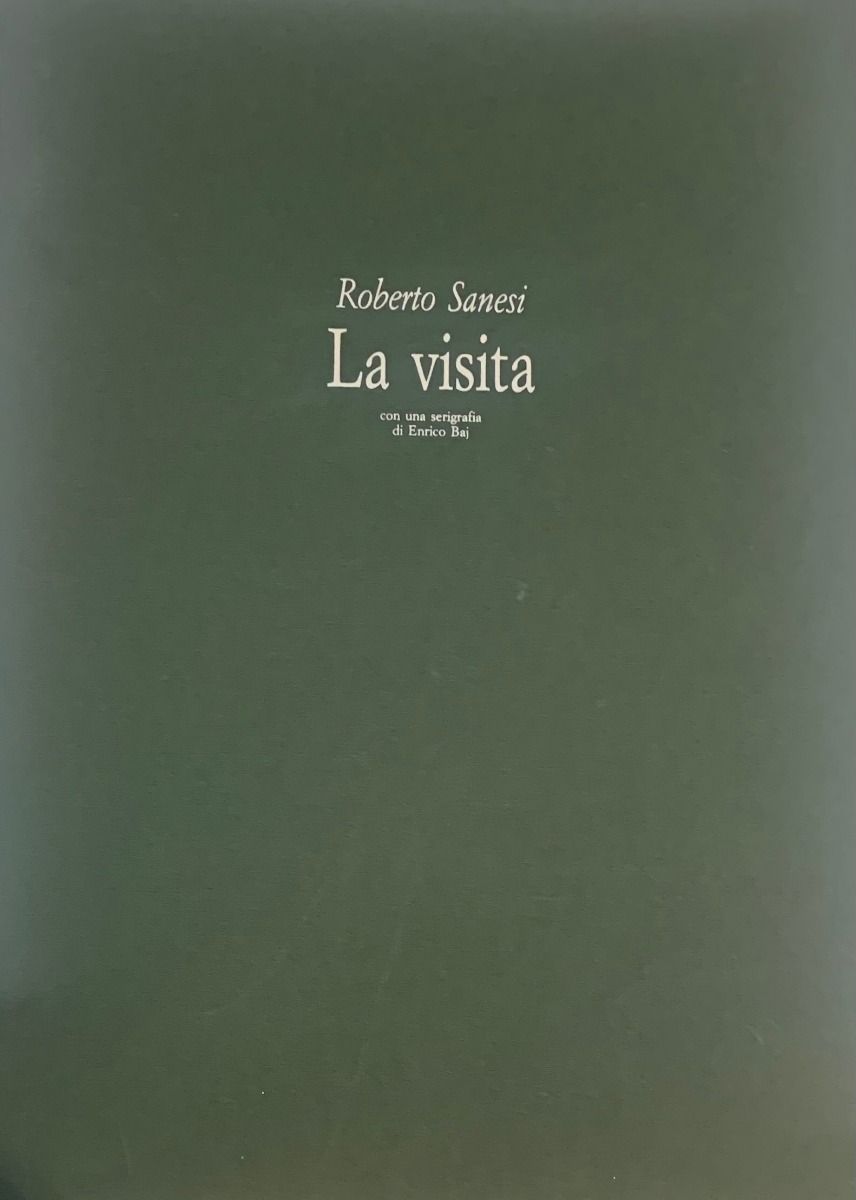-
-
- Alexander Calder(22)
- André Derain(86)
- Andy Warhol(23)
- Antoni Tapiès(22)
- Arman(28)
- Aurélie Nemours(1)
- Bengt Lindström(23)
- Bernard Buffet(196)
- César(9)
- Charles Eames(1)
- Charlotte Perriand(17)
- Claude Weisbuch(37)
- Corneille van Beverloo(14)
- Eduardo Chillida(10)
- François Morellet(1)
- Georges Braque(85)
- Gustav Klimt(18)
- Hans Bellmer(18)
- Hans Hartung lithograph(17)
- Henri Matisse(171)
- Hervé Télémaque(5)
- Jacques Villeglé(8)
- Jean Cocteau(187)
- Jean Hélion(11)
- Jean Miotte(10)
- Jean Picart Le Doux(6)
- Joan Miro(116)
- Karel Appel(1)
- Keith Haring(16)
- Ladislas Kijno(2)
- Léonard Tsugouharu Foujita(45)
- Leonor Fini(104)
- Louis Toffoli(15)
- Marc Chagall(372)
- Marie Laurencin(43)
- Maurice de Vlaminck(84)
- Maurice Utrillo(17)
- Max Ernst(43)
- Mimmo Rotella(4)
- Niki de Saint Phalle(5)
- Pablo Picasso(412)
- Peter Klasen(9)
- Philippe Pasqua(1)
- Pierre Alechinsky(35)
- Pierre Soulages lithographs(33)
- Pierre Tal-Coat(5)
- Pierre-Yves Trémois(36)
- Raoul Dufy(46)
- Robert Combas(6)
- Salvador Dali(414)
- Théo Tobiasse(5)
- Tony Soulié(13)
- Valério Adami(35)
- Victor Vasarely(2)
- Yves Brayer(42)
- Zao Wou-Ki(14)
Top artists -
-
-
-
- Alexander Calder(22)
- André Derain(86)
- Andy Warhol(23)
- Antoni Tapiès(22)
- Arman(28)
- Aurélie Nemours(1)
- Bengt Lindström(23)
- Bernard Buffet(196)
- César(9)
- Charles Eames(1)
- Charlotte Perriand(17)
- Claude Weisbuch(37)
- Corneille van Beverloo(14)
- Eduardo Chillida(10)
- François Morellet(1)
- Georges Braque(85)
- Gustav Klimt(18)
- Hans Bellmer(18)
- Hans Hartung lithograph(17)
- Henri Matisse(171)
- Hervé Télémaque(5)
- Jacques Villeglé(8)
- Jean Cocteau(187)
- Jean Hélion(11)
- Jean Miotte(10)
- Jean Picart Le Doux(6)
- Joan Miro(116)
- Karel Appel(1)
- Keith Haring(16)
- Ladislas Kijno(2)
- Léonard Tsugouharu Foujita(45)
- Leonor Fini(104)
- Louis Toffoli(15)
- Marc Chagall(372)
- Marie Laurencin(43)
- Maurice de Vlaminck(84)
- Maurice Utrillo(17)
- Max Ernst(43)
- Mimmo Rotella(4)
- Niki de Saint Phalle(5)
- Pablo Picasso(412)
- Peter Klasen(9)
- Philippe Pasqua(1)
- Pierre Alechinsky(35)
- Pierre Soulages lithographs(33)
- Pierre Tal-Coat(5)
- Pierre-Yves Trémois(36)
- Raoul Dufy(46)
- Robert Combas(6)
- Salvador Dali(414)
- Théo Tobiasse(5)
- Tony Soulié(13)
- Valério Adami(35)
- Victor Vasarely(2)
- Yves Brayer(42)
- Zao Wou-Ki(14)
Top artists -
-
Enrico BAJ - The General, 1994 - Silkscreen
The General, 1994
From the folder 'The Visit' by Roberto Sanesi
Silkscreen print
Dimensions: 50 x 35 cm
Dimensions :
- Height : 50 cm
- Width : 35 cm
Screen print :
Screen printing, also known as silkscreen, serigraphy, and serigraph printing - from latin "Sericum (silk) and greek "grapheion" (writing) - is a printing technique that uses a woven mesh to support an ink-blocking stencil to receive a desired image. The attached stencil forms open areas of mesh that transfer ink or other printable materials which can be pressed through the mesh as a sharp-edged image into a substrate. It is possible to use different meshes, for different colors, and create multi-colored works.
In the field of art, it is important to know how many prints have been made. The total number of prints is usually written on the print (e.g 20/200).
 Enrico Baj :
(1924–2003) was an Italian artist and writer. Many of his works show an obsession with nuclear war. He created prints, sculptures but especially collage. He was close to the surrealist and dada movements, and was later associatied with CoBrA. As an author he has been described as a leading promoter of the avant-garde. He worked with Umberto Eco among other collaborators. He had a long interest in the pseudo-philosophy 'pataphysics. He was born in Milan into a wealthy family, but left Italy in 1944 having upset the authorities and to avoid conscription. He studied at the Milan University law faculty and the Brera Academy of Art.
In 1951 he founded the arte nucleare movement with Sergio Dangelo, which unlike abstract art was overtly political. Baj himself was aligned with the anarchist movement. His most well-known pieces are probably the series of "Generals": absurd characters made from found objects such as belts or medals.
He made numerous works using motifs from other artists, from Leonardo da Vinci to Picasso. Sometimes he recreated entire works of other painters.
In 1972 public display of a major work, "Funeral Of The Anarchist Pinelli" (a reference to Carlo Carrà's famous painting The Funeral of the Anarchist Galli of 1911) was banned after the murder of the police officer believed to be responsible for Giuseppe Pinelli's death in custody. However his work continued to be political. In 1989 he designed thirty marionettes for Le bleu-blanc-rouge et le noir, an opera by Italian composer Lorenzo Ferrero to a libretto by Anthony Burgess, written for the bicentenary of the French Revolution. In his last years he created a series of paintings in protest at the election of Silvio Berlusconi. He died in Vergiate, Italy.
Enrico Baj :
(1924–2003) was an Italian artist and writer. Many of his works show an obsession with nuclear war. He created prints, sculptures but especially collage. He was close to the surrealist and dada movements, and was later associatied with CoBrA. As an author he has been described as a leading promoter of the avant-garde. He worked with Umberto Eco among other collaborators. He had a long interest in the pseudo-philosophy 'pataphysics. He was born in Milan into a wealthy family, but left Italy in 1944 having upset the authorities and to avoid conscription. He studied at the Milan University law faculty and the Brera Academy of Art.
In 1951 he founded the arte nucleare movement with Sergio Dangelo, which unlike abstract art was overtly political. Baj himself was aligned with the anarchist movement. His most well-known pieces are probably the series of "Generals": absurd characters made from found objects such as belts or medals.
He made numerous works using motifs from other artists, from Leonardo da Vinci to Picasso. Sometimes he recreated entire works of other painters.
In 1972 public display of a major work, "Funeral Of The Anarchist Pinelli" (a reference to Carlo Carrà's famous painting The Funeral of the Anarchist Galli of 1911) was banned after the murder of the police officer believed to be responsible for Giuseppe Pinelli's death in custody. However his work continued to be political. In 1989 he designed thirty marionettes for Le bleu-blanc-rouge et le noir, an opera by Italian composer Lorenzo Ferrero to a libretto by Anthony Burgess, written for the bicentenary of the French Revolution. In his last years he created a series of paintings in protest at the election of Silvio Berlusconi. He died in Vergiate, Italy.





